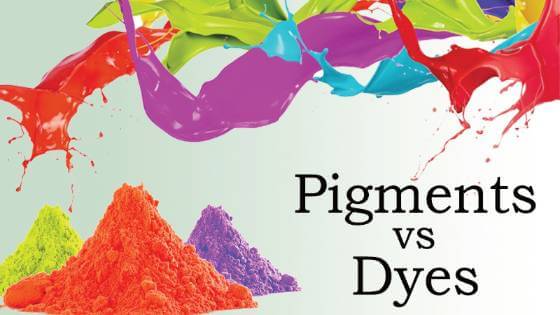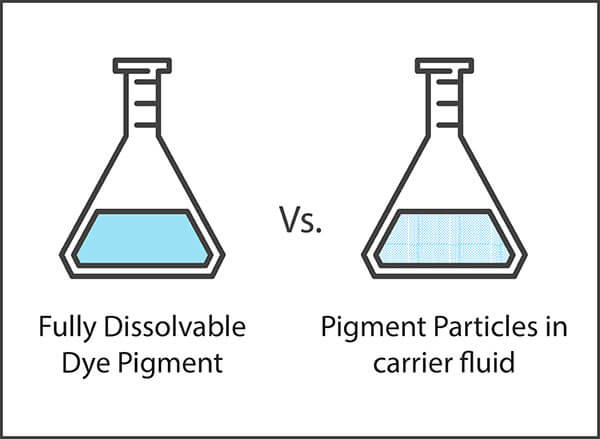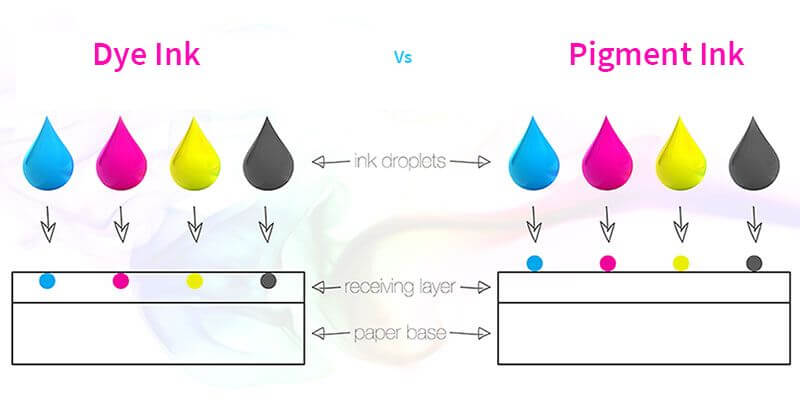Pigment Vs Dye Ink: What You Should Know Before Purchasing a Inkjet Printer
Sep 03, 2020 7:56:16 PM

While some inkjet printers use dye-based inks, others use pigment-based inks. You can even find color inkjets that use a combination of dye and pigment-based inks.
When you are planning to buy a new inkjet printer, you will, among other things, need to consider whether you need pigment or dye-based inks.
So, it pays to understand the differences between pigment and dye inks.
Pigment Vs Dye Ink: The Composition
Dye-based ink cartridges have been around for a very long time. Pigment-based inks, however, are a newer invention.
Dyes are generally liquid in form while pigments are not. In fact, pigments are powdery in form.
Dye-based printer inks use color substances or colorants that are fully dissolved in a liquid.

Pigment-based printer inks, on the other hand, consist of fine powder of solid colorant particles suspended in a liquid carrier.
Pigment Vs Dye Ink: Color Stability
You can read our guide on how printer ink works to know how the print head in an inkjet applies the ink onto a substrate (e.g. a paper, fabric, film, etc.).
But how do pigment and dye inks perform in terms of color stability?
Well, dyes get absorbed into the paper fiber. Pigment particles, on the other hand, sit on the surface of the paper and bond with the fiber.

Put simply, pigment-based particles form a thicker layer on a substrate than dyes.
This is the reason why prints produced with pigment-based inks are resistant to various external influences such as UV (Ultra Violet) rays and gases.
Prints made with pigment-based inks are fade-resistant; they tend to last longer. In other words, pigment-based prints retain their colors much longer than dye-based prints.
Pigments Vs Dye Ink: Interaction with Water
Pigments win the ‘pigment Vs dye’ debate when it comes to their interaction with water.
Dyes on a paper tend to flow when they come in contact with water. Pigments, however, are more resistant.
Colors on a print made with dye-based inks will come off unless you use a specialty (coated label) paper. These prints are water-resistant as long as their labels are not rubbed against something.
Pigments Vs Dye Ink: Quality
Dye-inks provide a wider color gamut than pigment-inks. Prints made with dye-inks look more vivid and colorful.
This is the reason why a large fraction of all-in-one color inkjet printers use dye-inks.
Many printers include at least one pigment-ink for printing Black & White photos.
Pigments Vs Dye Ink: Can Everyone Tell the Difference In Quality?
For a hobbyist, it is difficult to tell the difference between initial print quality delivered by pigment and dye-based inks.
Prints look nearly similar in terms of vibrancy and color reproduction.
However, if you compare two prints made by pigment and dye-based inks side-by-side, you may be able to spot some qualitative differences.
Many professional users are satisfied with the quality and performance of dye-based inks.
Pigment Vs Dye Ink: Which one is Right For You?
Pigment-ink emerges a clear winner when it comes to:
- The longevity of the print
- Resistance to natural elements such as water and light
- Stability of the color on the print
But, all prints, whether made with pigment or dye-based inks, will fade over time.
Dye-based inks are cheaper than pigment-based inks. Over the last few years, there have been significant advancements in how pigment and dye-based inks are formulated. These advancements have addressed various shortcomings of both types of ink formulations.
In most cases, pigment-based inks are typically marketed towards professional users while low-cost dye-based inks are marketed towards enthusiasts or amateurs.
Most professional photographers, for instance, prefer inkjet printers that use pigment-based inks.
Unless you are a pro-user, it wouldn’t matter whether you buy an inkjet printer that uses pigment or dye-based inks.
As a general rule, you should opt for dye-ink if your prints are meant for indoor use in an office or when you don’t need a print to retain all of its colors as-they-were for more than a year or two.
In case you need prints that can survive at least two years of outdoor exposure with little or no fading, consider buying an inkjet that uses pigment-based inks.
Final Words
Whether you prefer pigment or dye-based inks, consider buying compatible ink cartridges to save up to 20% on printing costs.
These low-cost cartridges for HP, Brother, Epson, and Canon printers work just like their OEM (Original Equipment Manufacturer) counterparts.
You need not worry about cartridge recognition issues or manufacturer’s warranty when you use high-quality compatibles.
Be sure you know how to save ink when you print photos. Many people end up using up a lot more ink they actually need.
| Tags: Pigment inkjet ink buying a new inkjet printer dye based ink best pigment ink printers

Comments